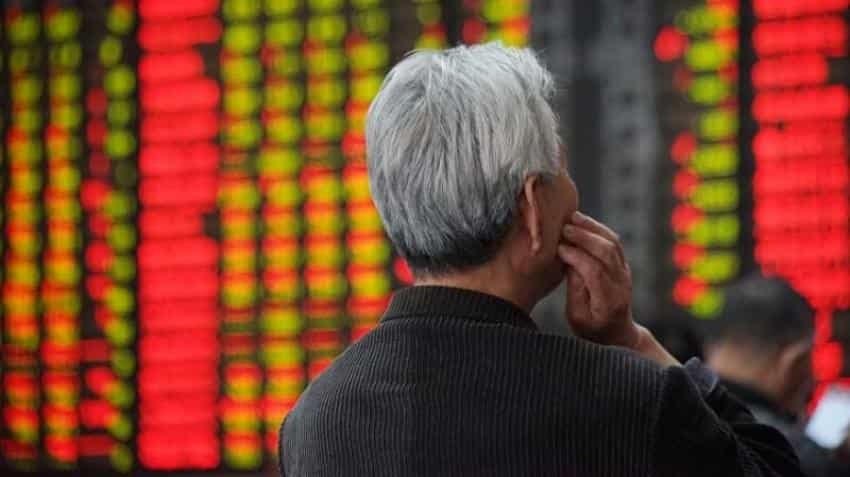Explainer: What China's MSCI inclusion means for stock market
MSCI's decision a year ago to include yuan-denominated Chinese stocks, or "A-shares", into its emerging market (EM) index triggered a rally in Chinese blue-chips in 2017, though the market has corrected this year amid rising borrowing costs and fears of a Sino-US trade war.

Global market research and index company MSCI Inc will add roughly 230 China-listed shares to its emerging market benchmark in a two-step process starting on June 1, a move expected to drive a surge of foreign money into the country`s stock markets.
MSCI's decision a year ago to include yuan-denominated Chinese stocks, or "A-shares", into its emerging market (EM) index triggered a rally in Chinese blue-chips in 2017, though the market has corrected this year amid rising borrowing costs and fears of a Sino-US trade war.
Foreign buying of Chinese stocks was tepid on Thursday on the last trading day before their inclusion.
WHAT, EXACTLY, IS THE MSCI INCLUSION?
The US-based creator of widely-watched stock indices, is adding A-shares to its benchmark Emerging Markets and All Country World Index indices. The firms are predominantly blue chips such as SAIC Motor Corp and liquor maker Kweichow Moutai Co Ltd.
Late on Wednesday, MSCI tweaked the MSCI China A Inclusion Index, dropping telecom equipment and smartphone maker ZTE Corp, and four other companies, whose shares have been suspended.
WHY IS THIS IMPORTANT?
MSCI`s EM index is tracked by funds with assets under management in excess of $1.9 trillion. That means when Chinese shares are added to the index, money that follows the benchmark will have to buy Chinese stocks to avoid deviation.
Some analysts estimate about $20 billion will initially flow into Chinese stocks, rising to $300 billion if there is full inclusion, as many expect. Some investors, however, predict much smaller inflows in the short term.
The A-shares included initially will have an aggregate weight of 0.39 percent in the MSCI Emerging Markets Index at a 2.5 percent partial inclusion factor. The second phase of entry will occur in September.
Further inclusion could include a higher weighting and mid-cap shares. A full inclusion would see A-shares account for about 18 percent of the MSCI EM index.
WHY DIDN'T IT HAPPEN SOONER?
In 2013, MSCI put A-shares on a review list but did not include them in indexes, citing issues including capital mobility restrictions and uncertainties around taxes.
Finally, in June 2017, MSCI announced the partial inclusion this year following a fourth consultation with global investors, recognising China`s efforts to reform its capital markets.
HOW CAN FOREIGNERS BUY CHINESE SHARES?
Since China`s markets are not fully open to foreigners, the main channel for MSCI-related share purchases will be the Shanghai and Shenzhen "stock connect" links with Hong Kong.
These two-way investment schemes allow investors to buy Chinese shares through the former British colony, and vice versa. The daily quota for "northbound" purchases of shares in each channel was quadrupled to 52 billion yuan on May 1.
Foreign investors can also access Chinese shares through QFII, the Qualified Foreign Institutional Investor scheme, within limits. The State Administration of Foreign Exchange has granted $99.5 billion worth of quotas for QFII investment.
Another scheme, RMB QFII, allows the use of offshore yuan to invest in Chinese shares.
Foreign investment in Chinese shares has been on the rise, but remains relatively small. The "northbound" quota through the connect schemes has rarely been maxed out. Foreign investors have cited a litany of concerns, from unfamiliarity with Chinese companies to worries about corporate governance.
Some funds tracking the MSCI A-share inclusion index have seen heavy inflows since announcement of the China entry.
DO ANALYSTS EXPECT FURTHER INCLUSION?
Yes. MSCI says further inclusion will be subject to China`s moves to deregulate its markets, including granting foreigners more accessibility, making continued progress on trading suspensions, and further loosening restrictions on the creation of index-linked investment vehicles.
Get Latest Business News, Stock Market Updates and Videos; Check your tax outgo through Income Tax Calculator and save money through our Personal Finance coverage. Check Business Breaking News Live on Zee Business Twitter and Facebook. Subscribe on YouTube.
RECOMMENDED STORIES

Fundamental picks by brokerage: These 3 largecap, 2 midcap stocks can give up to 28% return - Check targets

SBI Senior Citizen Latest FD Rates: What senior citizens can get on Rs 7 lakh, Rs 14 lakh, and Rs 21 lakh investments in Amrit Vrishti, 1-, 3-, and 5-year fixed deposits

Tamil Nadu Weather Alert: Chennai may receive heavy rains; IMD issues yellow & orange alerts in these districts

SIP+SWP: Rs 10,000 monthly SIP for 20 years, Rs 25 lakh lump sum investment, then Rs 2.15 lakh monthly income for 25 years; see expert calculations

Top 7 Mutual Funds With Highest Returns in 10 Years: Rs 10 lakh investment in No 1 scheme has turned into Rs 79,46,160 in 10 years

SIP vs PPF: How much corpus you can build in 15 years by investing Rs 1.5 lakh per year? Understand through calculations

Retirement Planning: Investment Rs 20 lakh, retirement corpus goal Rs 3.40 crore; know how you can achieve it
11:20 AM IST










 Vodafone Idea share stock price slips despite inclusion in MSCI GLOBAL Standard Index and narrow loss in Q1 FY25 results margin anil singhvi view target stop loss fututre
Vodafone Idea share stock price slips despite inclusion in MSCI GLOBAL Standard Index and narrow loss in Q1 FY25 results margin anil singhvi view target stop loss fututre MSCI Standard Index August 2024 review: Big announcements expected, Rs 9,806 crore likely inflow on inclusion of 6 stocks
MSCI Standard Index August 2024 review: Big announcements expected, Rs 9,806 crore likely inflow on inclusion of 6 stocks  MSCI India index adds NHPC, Canara Bank, JSW Energy and other 10 firms; removes Paytm and 2 more
MSCI India index adds NHPC, Canara Bank, JSW Energy and other 10 firms; removes Paytm and 2 more Asia shares hit 15-month high as traders wait for CPI
Asia shares hit 15-month high as traders wait for CPI